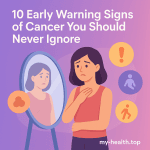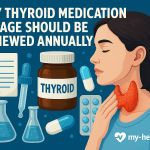This article is for informational purposes only and is not a substitute for professional medical advice. Always consult with a healthcare provider for personalized guidance.
Understanding Heart Disease in Women
Heart disease is often perceived as a man’s concern. However, it is the leading cause of death for women in the United States. Did you know that nearly 1 in 5 women will experience a heart attack in their lifetime? Understanding the unique risks women face is crucial.
New Guidelines Overview
Recently, the American Heart Association (AHA) released updated guidelines aimed at preventing heart disease specifically in women. These guidelines emphasize a holistic approach, addressing both physical and emotional health.
Key Risk Factors
Women face specific risk factors, such as hormonal changes during menopause, pregnancy-related conditions, and a higher likelihood of experiencing stress and depression. Recognizing these factors is the first step in prevention.
Lifestyle Changes
The new guidelines advocate for lifestyle modifications that can significantly reduce heart disease risk:
- **Regular Exercise**: Aim for at least 150 minutes of moderate aerobic activity each week.
- **Balanced Diet**: Focus on whole grains, fruits, vegetables, and healthy fats.
- **Avoid Smoking**: Smoking dramatically increases heart disease risk.
Recommended Screenings
Early detection is key. The guidelines recommend regular screenings, including:
- **Blood Pressure Checks**: At least once every two years.
- **Cholesterol Levels**: Starting at age 20 and continuing every 4-6 years.
- **Diabetes Screening**: Especially for those with a family history of diabetes.
Emotional Well-being Matters
Women’s heart health is not just physical. Emotional and mental well-being play a vital role. Did you know that women are more likely to experience anxiety and depression after a heart event? Addressing mental health is part of the comprehensive care recommended by the AHA.
Community and Support
Building a support system is essential. Whether it’s friends, family, or support groups, having people to lean on can make a significant difference in maintaining a heart-healthy lifestyle.
Key Takeaways
- Heart disease is the leading cause of death for women in the U.S.
- New guidelines focus on lifestyle changes and regular screenings.
- Recognizing unique risk factors for women is crucial for prevention.
- Emotional health is as important as physical health in heart disease prevention.
References
- American Heart Association. (2023). Heart Disease and Stroke Statistics—2023 Update.
- CDC. (2022). Heart Disease Facts.
- NHS. (2023). Women and Heart Disease.
- UpToDate. (2023). Cardiovascular Disease in Women.
- PubMed. (2023). Risk Factors for Heart Disease in Women.







Post a comment